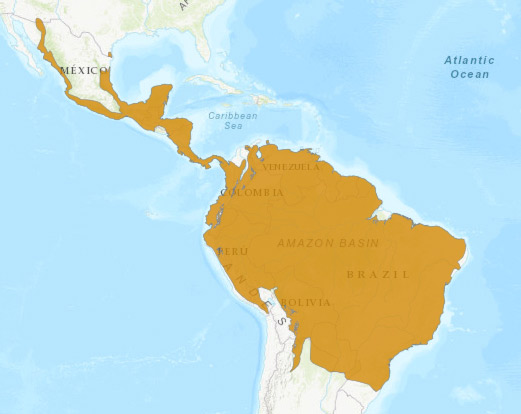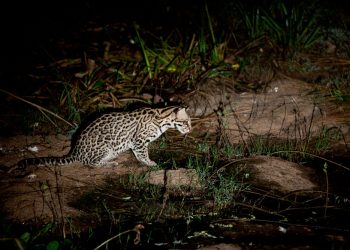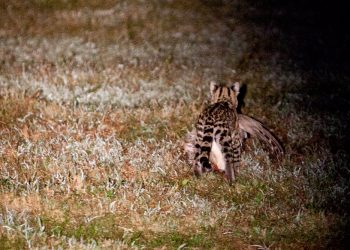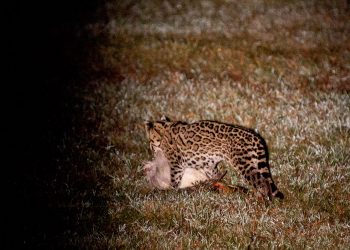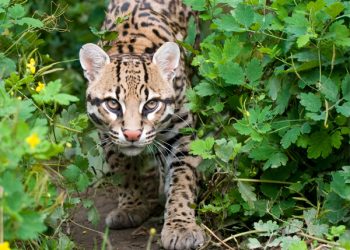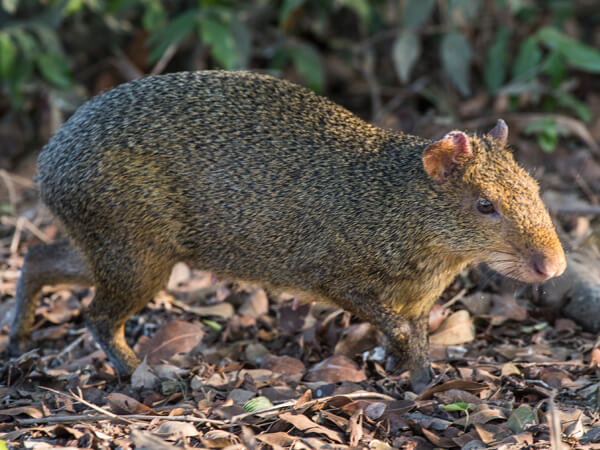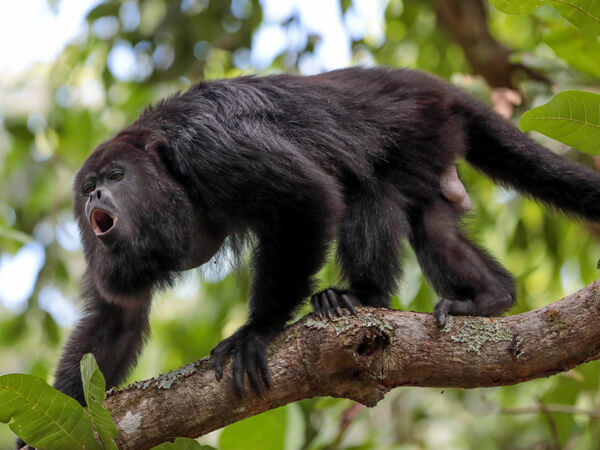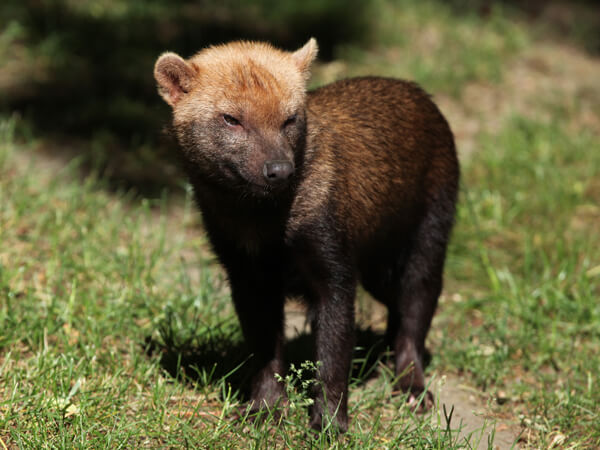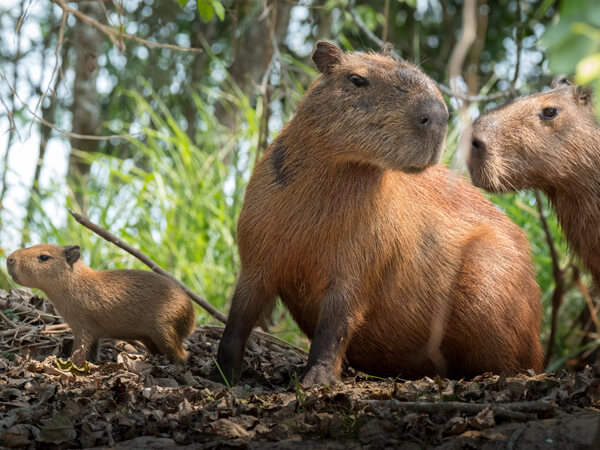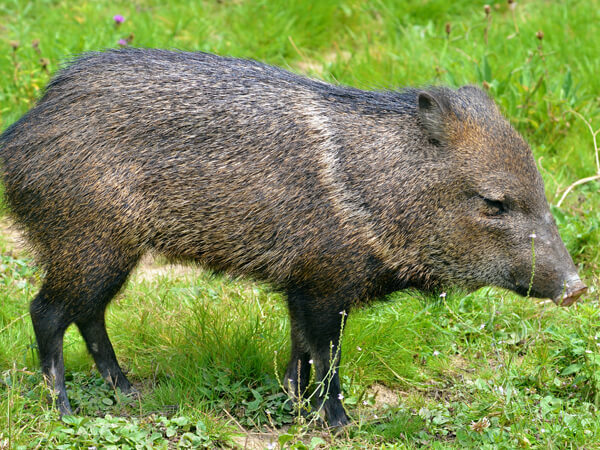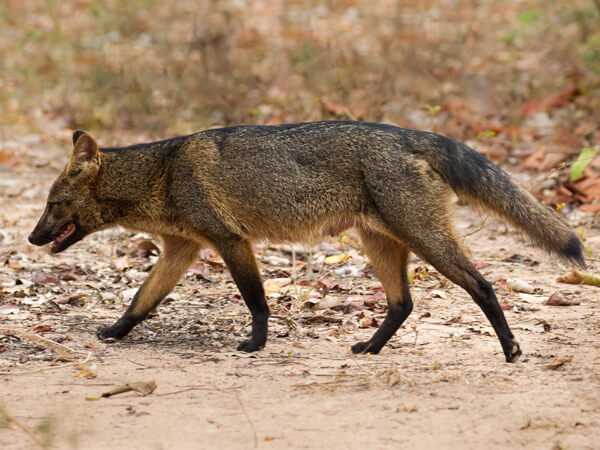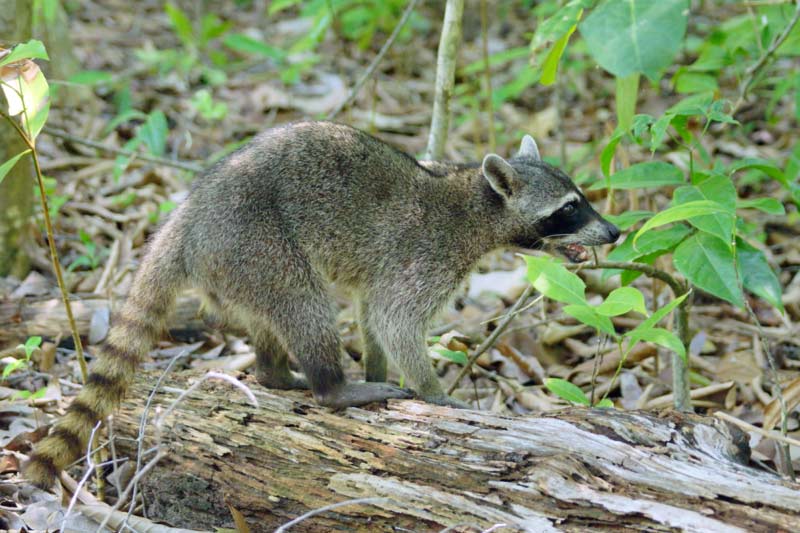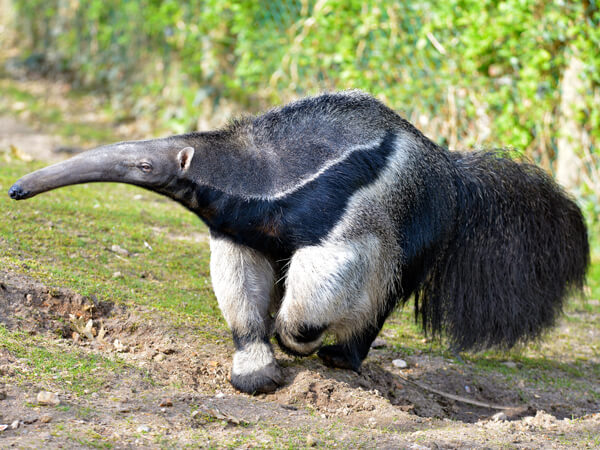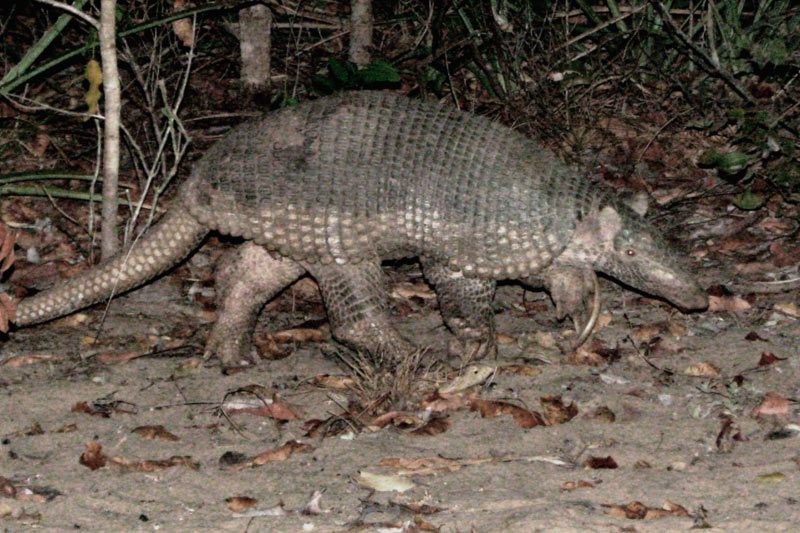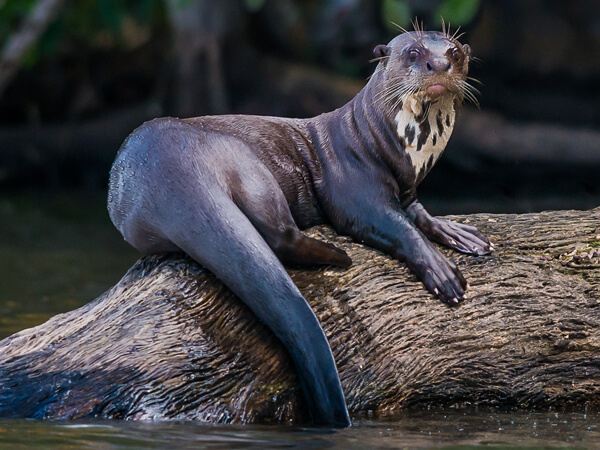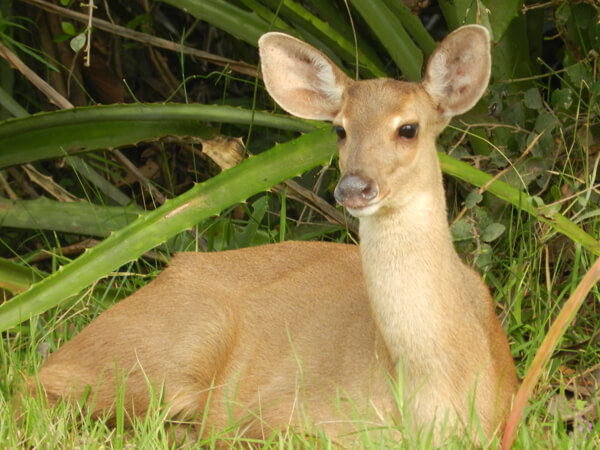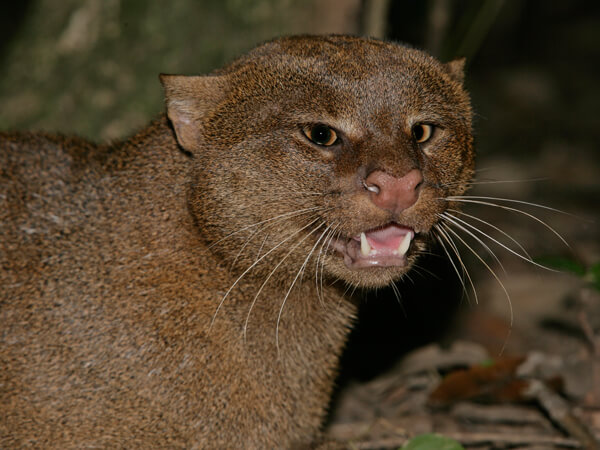Largest species among the neotropical small felines, the Ocelot is an excellent predator in its niche. They have a pattern of stripes similar to other wild cats. It feeds mainly on small mammals, fish and birds.
Click to learn more
Distribution
The species occurs in a large area across America. From the southern United States, Texas, to northern Argentina, including all Brazilian biomes. It occurs in a wide variety of habitats, from sea level up to 1,200 meters in altitude, always in areas with dense forest cover. They are nocturnal, hiding during the day under twigs and fallen trees or in holes in the roots of trees. They are good climbers, but less arboreal than the cat-maracajá.
Features
It has 72 to 100 cm of length, with the tail measuring of 25 to 41 cm. They can weigh from 6.6 to 15.5 kg and males are larger than females. They are often confused with jaguar pups due to the pattern of stripes and similar colors. Among the small felines of the Americas, they are the largest, behind only the jaguar and the puma.
Behavior
Ocelots, as with most cats, are both crepuscular and nocturnal animals, more active in the late afternoon and throughout the night. This does not preclude their activities during the day, during which time they are more prone to bird hunting.
Ocelots are efficient swimmers, solitary and territorial, with overlapping male territories that cover areas two to three times larger than those of the females. Invasions of territories for young ocelots seeking to mark out their own territory leads to very heavy fighting and is a major cause of mortality among ocelots. Their territories can range between 3.5 to 17.7 square kilometers, and individuals run between three to eight kilometers per night.
Food
They feed mainly on terrestrial animals; their favorite prey varies in different regions. Included are: small rodents, fish, opossums, armadillos, agoutis, rabbits, raccoons, anteaters, sloths, monkeys, bats, small alligators, lizards, snakes, terrapins, crabs, frogs, poultry, fruits and even grass. Like the big cats, ocelots will sometimes conceal a partially eaten prey to finish eating later.
They usually hunt at night, walking slowly through pre-established trails, and lying in wait for 30 to 60 minutes at a time. They rarely hunt in open areas.
Reproduction
Pregnancy takes between 79 and 82 days. It is usual to give birth to one or two babies weighing approximately 250 grams each, who are dependent on the mother for several months. Females increase their hunting efforts for up to 17 hours a day to feed their young.
Conservation
Despite being classified as a matter of “low concern” by the national lists of both ICMBio and the International Union for Conservation of Nature (IUCN), an estimated 200,000 ocelots were killed in the 1960s and 1970s for fur trade. This number of killings was reduced considerably after laws were introduced prohibiting hunting and the importing of fur from other countries. In some places, however, the poaching continues. Ocelots adapt well to degraded areas, despite the population decline due to habitat loss. The presence of ocelots has a negative effect on the populations of small mammals given the predator potential of the ocelot. This is known as the “pardalis effect”.

